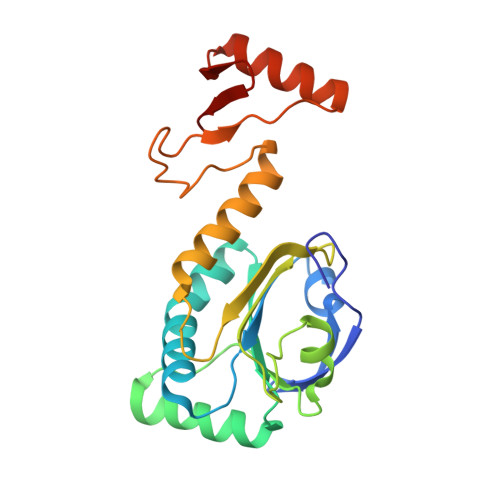Unnaturally Distorted Hexagonal Protein Ring Alternatingly Reorganized from Two Distinct Chemically Modified Proteins.
Himiyama, T., Hamaguchi, T., Yonekura, K., Nakamura, T.(2023) Bioconjug Chem
- PubMed: 36888722
- DOI: https://doi.org/10.1021/acs.bioconjchem.3c00057
- Primary Citation of Related Structures:
8HH0, 8HLA - PubMed Abstract:
In this study, we constructed a semiartificial protein assembly of alternating ring type, which was modified from the natural assembly state via incorporation of a synthetic component at the protein interface. For the redesign of a natural protein assembly, a scrap-and-build approach employing chemical modification was used. Two different protein dimer units were designed based on peroxiredoxin from Thermococcus kodakaraensis , which originally forms a dodecameric hexagonal ring with six homodimers. The two dimeric mutants were reorganized into a ring by reconstructing the protein-protein interactions via synthetic naphthalene moieties introduced by chemical modification. Cryo-electron microscopy revealed the formation of a uniquely shaped dodecameric hexagonal protein ring with broken symmetry, distorted from the regular hexagon of the wild-type protein. The artificially installed naphthalene moieties were arranged at the interfaces of dimer units, forming two distinct protein-protein interactions, one of which is highly unnatural. This study deciphered the potential of the chemical modification technique that constructs semiartificial protein structures and assembly hardly accessible by conventional amino acid mutations.
- Biomedical Research Institute, National Institute of Advanced Industrial Science and Technology, 1-8-31, Ikeda, Osaka 563-8577, Japan.
Organizational Affiliation:

















